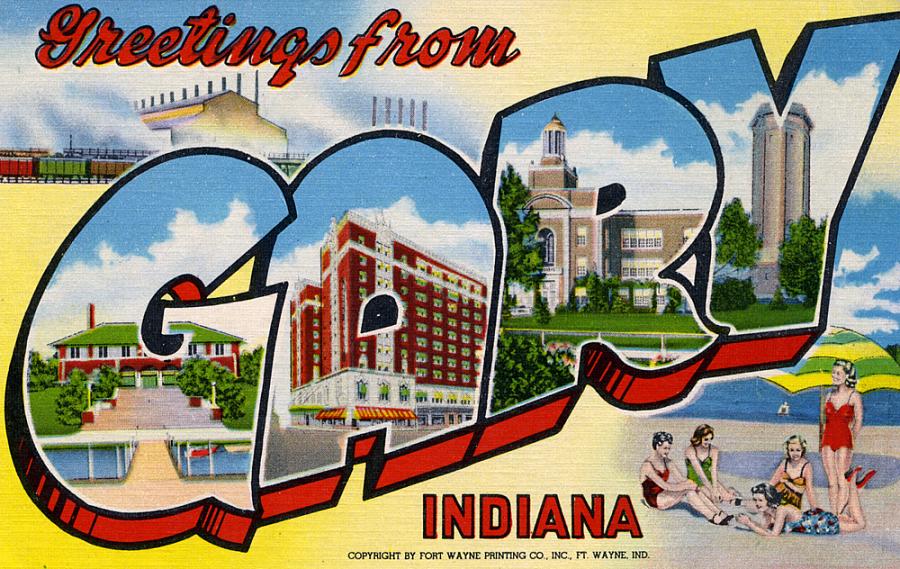In Gary, Ind., Coverage of Health Woes Sparks Change

Even as I moved on to other jobs and beats, I continued to witness the city's growing healthcare disparities, state-leading infant mortality rate and disproportionately high rates of teen and premature births, HIV/AIDS infections and chronic disease.
All the dire numbers were byproducts of Gary's decline from a vibrant Midwest manufacturing hub to a Rust Belt steel town down on its luck. At various times in the 1980s and 1990s, Gary held the dubious distinction of being the arson, murder and car theft capital of America.
Last year, I began talking with Gary healthcare providers to reacquaint myself with the city's healthcare challenges for what would become an ambitious 12-part series for my old newspaper.
For my series, which you can read here, I wanted to explore how proposals to build a regional trauma center and a proposed teaching hospital might impact healthcare access and quality in Gary. I wanted to know how the Affordable Care Act would affect healthcare providers and Gary residents, who suffer high rates of diabetes, hypertension, heart and kidney disease and asthma. I also wanted to understand how the city's struggling doctors, nurses and other providers continue to practice despite the adverse economic and social climate.
Nobody had really examined the city's healthcare infrastructure or the declining health of its citizens and the timing seemed propitious to explore those issues. No one else in Northwest Indiana was doing it. Why not me? As a freelancer, I had the time and a venue (my former employer, the Post-Tribune) and an editor committed to the project.
With rumors of a proposed teaching hospital and a regional trauma center, there was also public interest.
Gary once was home to two hospitals and between 70 and 100 doctors, most of whom lived and worked in the Steel City. While a few physicians reside in Gary today, just about 30 still practice here.
More than one-quarter of the city's residents remain uninsured and Medicaid and other state programs cover large portions of other citizens.
The stories, published in early February, provided a frank look at the city's past and a glimpse into a potentially brighter future.
One of the series' key findings was Indiana's ranking in public health and prevention spending. It ranked either last or near to the bottom in funding from the CDC, U.S. Public Health Service and HRSA monies received and state public health spending.
I ended up with many insider insights, but when I started the reporting project, it wasn't clear that I'd get through the front door of Methodist Hospitals, a safety net hospital that also stood to lose millions of dollars in Disproportionate Share Hospital (DSH) funding with the implementation of the Affordable Care Act.
Because of earlier unflattering stories about Methodist and a historically tense relationship between the hospital and the Post-Tribune, securing the initial interviews with top staff there took more time than I'd hoped. But eventually, the Methodist staff granted me access to its staff, departments and patients.
The series ultimately provoked discussion and moved long-simmering healthcare topics to front burners. Sources told me it spurred broader collaborations to improve healthcare access in Gary.
At a recent "State of the Hospital" public meeting, Methodist officials spoke openly for the first time about efforts to develop a regional trauma center to elevate emergency department services. And, since the series ran, talks with academic medical center partners are increasing in frequency and intensity, though no firm plans exist yet for either project.
"The stories heightened public awareness of key hospital and community services for people with chronic illnesses," said one Methodist official.
Another Gary healthcare leader said the project stories are being used in discussions with local CEOs of the healthcare forum, One Region, One Voice. She said the articles "keep the attention on the issue and areas of need" and "have raised awareness of the importance of prevention."
This executive, who is her healthcare organization's liaison to state legislators, said she's used the stories to point out how disproportionately little Indiana is spending on public health and prevention."
The volume of interest in diabetes outreach programs has grown in the community, both at the hospital and at the community health center.
State Rep. Charlie Brown, D-Gary, said the stories illuminated Gary's longstanding healthcare crisis throughout Indiana, "keeping the word out there, educating those far removed and attracting the interest of those around the state who haven't a clue to the problems were facing here," said Brown.. "The general public is more aware of what our needs are now."
The current recession has squelched state funding for such costly initiatives as a new teaching hospital, but the parties continue to pursue discussions. Unless the health reform law is repealed, the insurance expansions and growth of the Community HealthNet community health center should improve access to healthcare for thousands of Gary residents, something that was little known in the Steel City.
Healthcare providers have heard many promises before. Most, however, seem optimistic that better times are ahead.
One step at a time, a local doctor cautioned me. Change comes slowly, said this physician whose patience has been tested before. "But I believe change is going to come."
Maybe I'm an optimist, but so do I.
Photo credit: Steve Shook via Flickr (reprinted with permission)

